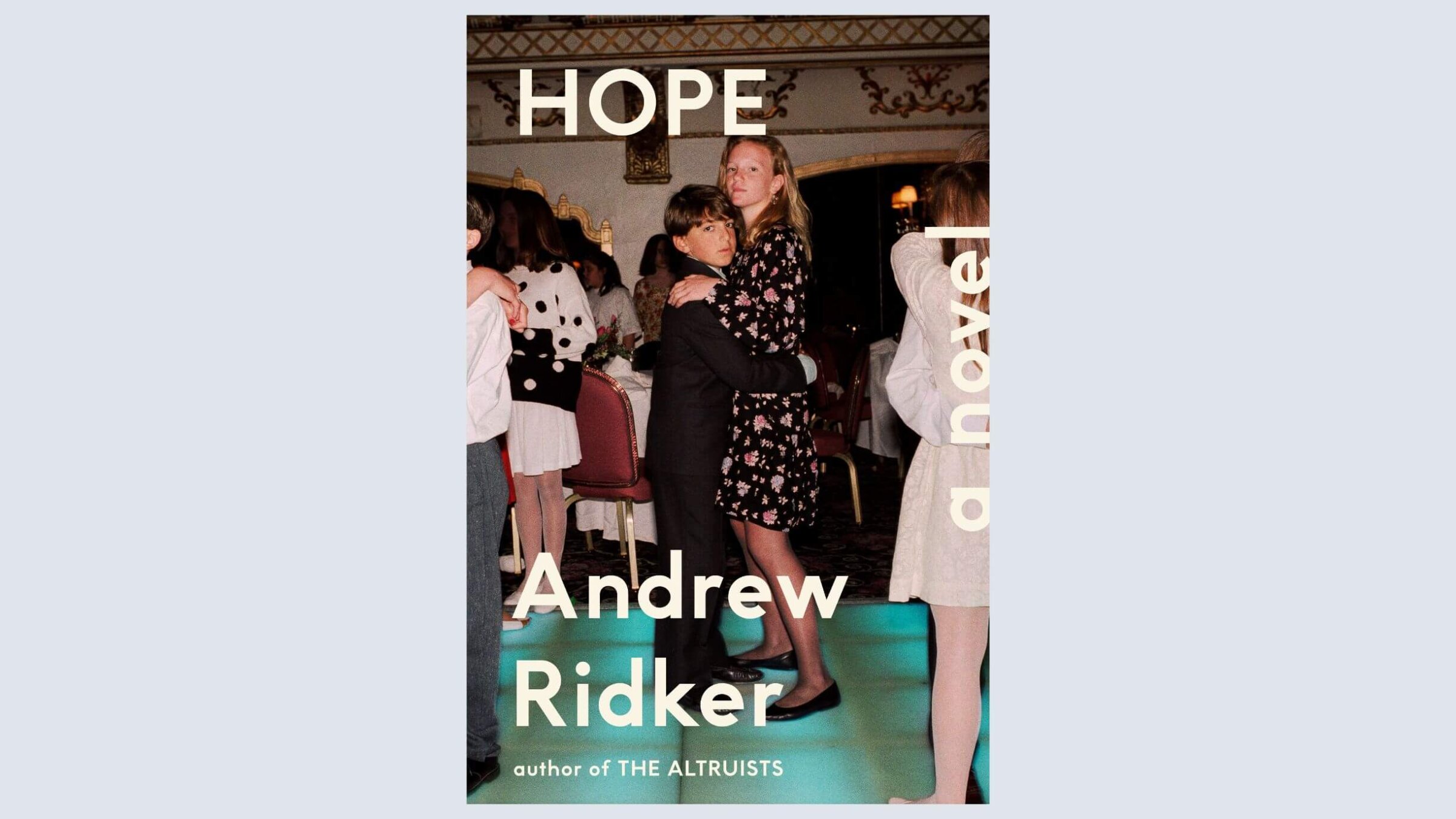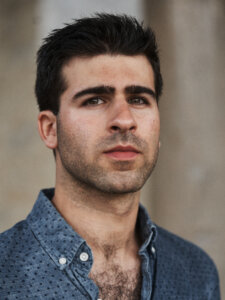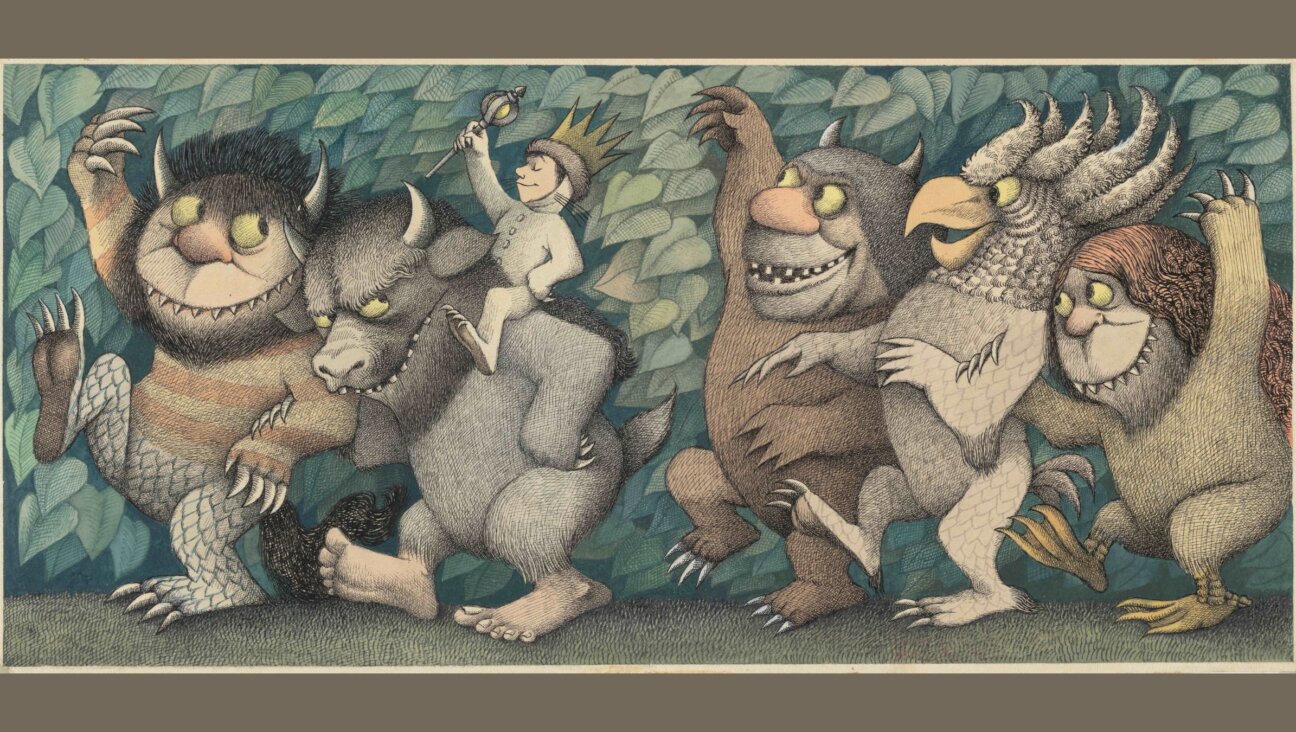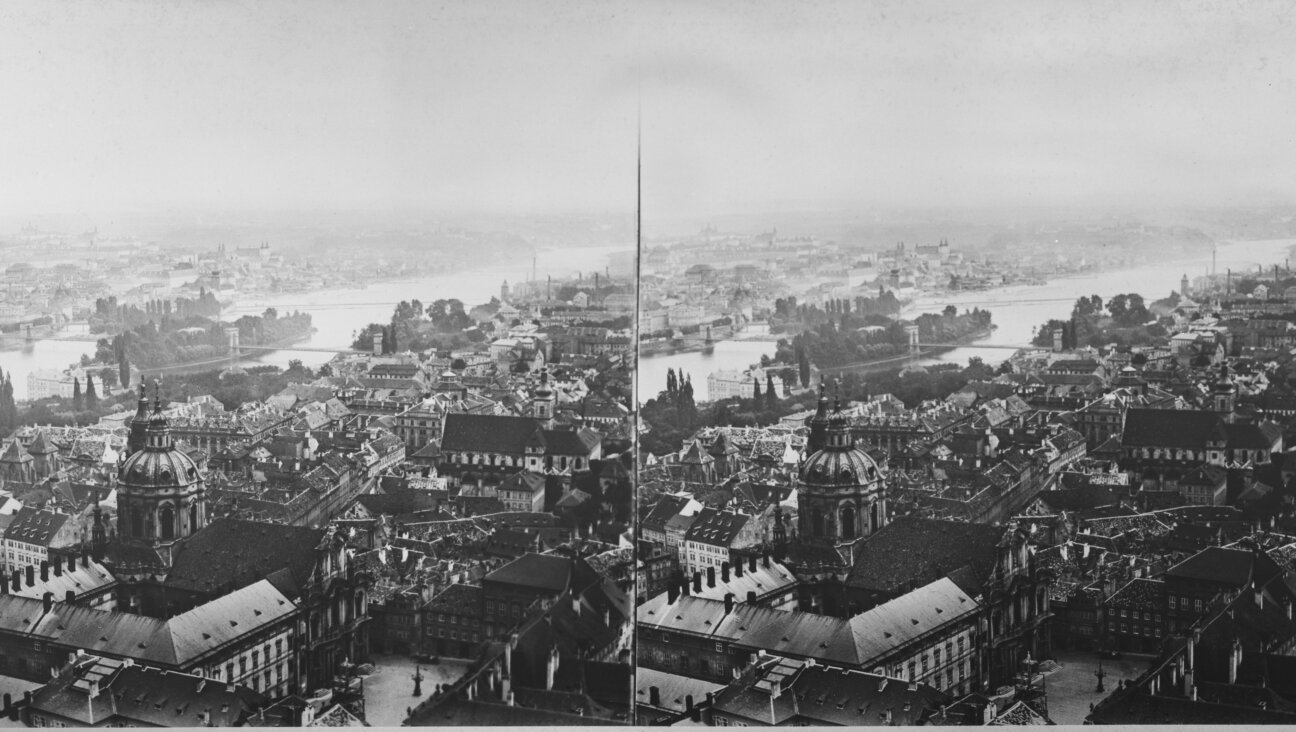A Catholic photographer and Chicago’s cannabis king: How I tracked down the greatest bar mitzvah photo of all time

Andrew Ridker found the perfect photo for the cover of his second novel — but finding its subjects was anything but easy. Courtesy of Viking
I don’t remember where I found the photograph, but the first time I saw Melissa Ann Pinney’s “Bat Mitzvah Dance, Chicago, IL,” I knew I had to have it on the cover of my second novel, Hope. Never mind that none of my characters fit the physical descriptions of the dancers in the photograph. Never mind that there’s no bat mitzvah scene in the book. Pinney’s picture, which features two stoic, slow-dancing teens, captures that fleeting but formative stage between childhood and adulthood when all you want is to grow up — and fast — without knowing what lies ahead.
This seemed germane to Hope, a story about a Jewish family in which the parents crave the freedoms afforded by youth, while their kids chase responsibilities beyond their reach. “She’d wanted to be a grown-up ever since she was a child,” I wrote of Maya, one of my main characters, “and now, at 22, was depressed to discover that all the grown-ups wanted to be children.”
What better way to capture that feeling than through a picture of two precocious-looking kids in ill-fitting formalwear whose somber faces seem to gaze into the future? I had written Hope without having seen the photograph. Now, I couldn’t imagine the book without it.
The power of Jewish geography

But before I could publish the photo, I had to figure out who, exactly, was in it — a search that would demonstrate the power of Jewish geography. And it taught me, too, something about the state of Jewish-American identity today.
Getting Pinney’s permission to publish the photograph was the simple part. The problem was, she didn’t have model releases for the boy and girl in the photograph, which my publisher’s legal department required, as the faces of the two subjects are visible. (This is why you don’t see many faces on book covers, but you do see the backs of a lot of women’s heads.)
In order to use the photograph, we would have to track down the kids in the picture.
And all we knew about them was that they’d attended a bat mitzvah in Chicago in 1991.
First, Pinney posted the photo to Facebook, hoping to help me track down her subjects. A fellow photographer, Jennifer Greenburg, wrote that she recognized the image. In fact, she was pretty sure she’d been a guest at the party in question. She remembered the first name of the boy in the picture — Benji! — as well as the school he attended.
A Bar Mitzvah cold case
This was a promising start: a first name and an alma mater. Subsequent commenters in a thread under Pinney’s post speculated on the girl’s identity, and where the event was held — the Knickerbocker Hotel, perhaps? Riveted, I watched the investigation unfold on my computer screen like an episode of CSI: Diaspora.
But then the case went cold. Tracking down a yearbook was tougher than expected. And the photograph was more than 30 years old, which meant the subjects were most likely in their 40s. They might have moved, or married and changed their names. It was time to bring out the big guns.
It was time to play Jewish geography.
I sent the photograph, and what little information we had, to my friend Jordan, a book publicist and self-described “yenta” whose large (and largely Jewish) social circle includes both Joan Nathan and Nathan Englander. Jordan put the call out to her camp friends, one of whom, Eva, looped in her brother, Avi, who had also once been Jordan’s boss. Avi’s wife, Noreen, had a friend named Julia who attended the same school as the boy in the photo. Minutes after Julia posted the photo on Instagram, a fellow alum replied with the full names of both subjects. It seemed that everyone who saw the photo fell in love with it, and set aside time to help solve the mystery.
A surprise connection to an elusive CEO
Jordan also put me in touch with her friend Sophie, a podcast producer and media researcher with a talent for tracking people down. (That Jordan, Sophie and I all grew up within a few square miles of each other in preponderantly Jewish suburbs of Boston — and that Sophie had worked with Noreen at Slate — was itself an encouraging sign that our world might just be small and connected enough for us to succeed.)
Sophie, who has a bright future in bounty hunting, used the tools at her disposal to track down contact information for the subjects of the photograph. She promptly emailed both of them, asking permission to use their likenesses. The girl in the photo, Kate, now a grown woman living in Denver, responded to Sophie that very same day with an enthusiastic “Absolutely!”
Benji — now Ben — proved more challenging. In the years since the photograph was taken, he had become the CEO of a successful cannabis company. (As it turned out, I had been a loyal customer of his for years without knowing it.)
Sophie tried repeatedly to reach him by phone, but he didn’t respond. I sent him an impassioned plea detailing how important the photograph — and his fine line of products — were to me. Still, he didn’t respond. One week passed, then another. New Year’s came and went. The book would be on shelves in seven months, and still we didn’t have a cover.
Last-minute relief
It was time to imagine the impossible: What if we couldn’t use the photo? My editor and I each ordered a copy of Bar Mitzvah Disco, a coffee table book by Roger Bennett, Nick Kroll and Jules Shell containing candid bar and bat mitzvah photographs. The photographs in Bar Mitzvah Disco are a riot, and one or two might have made a decent cover, but none of them contained the particular combination of humor and pathos in Pinney’s photograph.
So it came as a tremendous relief when, weeks after our deadline had passed, Ben returned a signed release. Sophie had made contact with his assistant, who explained the reason for the delay: Chicago’s cannabis king had been on vacation.
Studying the photo in an era when Jewish identity is torn between particularism and universalism, I’m amazed by how it manages to walk a line between the two.
It transports me back to the aching tenderness of my own mid-aughts years on the bar and bat mitzvah circuit: boys in baggy suits, tall girls in tights, snowball slow-dances, Coke & Pepsi, outrageous party favors. (Every guest at my bar mitzvah took home — no joke — a Siamese fighting fish.)
Bar Mitzvahs bridge divides
I wasn’t alone: Jews of all generations saw themselves in its composition — literally. A friend of my father’s was convinced the photo was taken at his bar mitzvah. The writer and podcaster Zibby Owens wrote on Instagram that she “seriously thought the girl in the polka dots on the left was me.”
The image resonates for members of the tribe. The short, brown-haired boy dancing with the tall, blonde girl seems to stand in for what Avital Chizhik-Goldschmidt once described in the Forward as “the long and complex history of Jewish men finding love beyond their community” — as in other words, the history of the Jewboy and the shiksa.
The image proved legible to non-Jews, too. When I showed the cover to my whitest, WASPiest friend, a guy from Princeton, New Jersey, with two last names, he told me it reminded him of his time in cotillion, when he was paired with the tallest girl in class for dance lessons. That such a singularly Jewish image should remind a guy from Princeton of cotillion shocked me.
It shouldn’t have. Like most great works of Jewish-American art — and to me, that’s what it is, although Pinney was raised Catholic — the photograph works on two levels.
A universal emblem of adolescenence
To Jewish eyes, it’s a Jewish image, conveying a particular set of feelings and experiences. To everyone else, it’s a universal emblem of adolescence — a time when girls develop faster than boys and everyone takes themselves a little too seriously.
Maybe that’s why so many people have seen themselves in it.
I can relate. Every now and then, I forget that the boy in the photo isn’t me. Because even if we don’t resemble one another, he looks the way I often feel: a 13-year-old boy in a baggy suit with a head too big for his shoulders, adrift on a dance floor the color of the ocean, waiting for everything to change.

I hope you appreciated this article. Before you go, I’d like to ask you to please support the Forward’s award-winning, nonprofit journalism during this critical time.
Now more than ever, American Jews need independent news they can trust, with reporting driven by truth, not ideology. We serve you, not any ideological agenda.
At a time when other newsrooms are closing or cutting back, the Forward has removed its paywall and invested additional resources to report on the ground from Israel and around the U.S. on the impact of the war, rising antisemitism and the protests on college campuses.
Readers like you make it all possible. Support our work by becoming a Forward Member and connect with our journalism and your community.
Make a gift of any size and become a Forward member today. You’ll support our mission to tell the American Jewish story fully and fairly.
— Rachel Fishman Feddersen, Publisher and CEO
Join our mission to tell the Jewish story fully and fairly.























